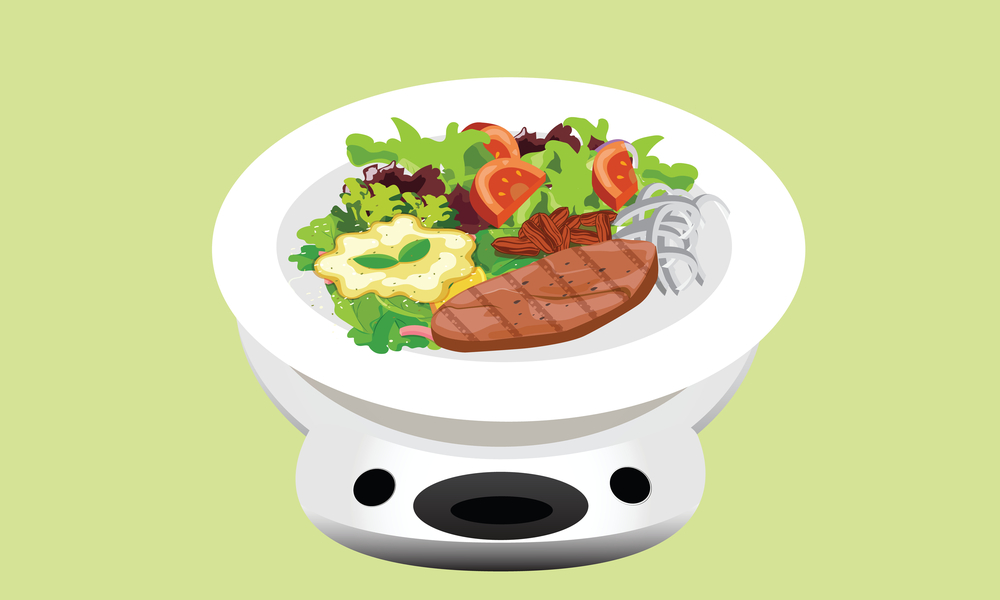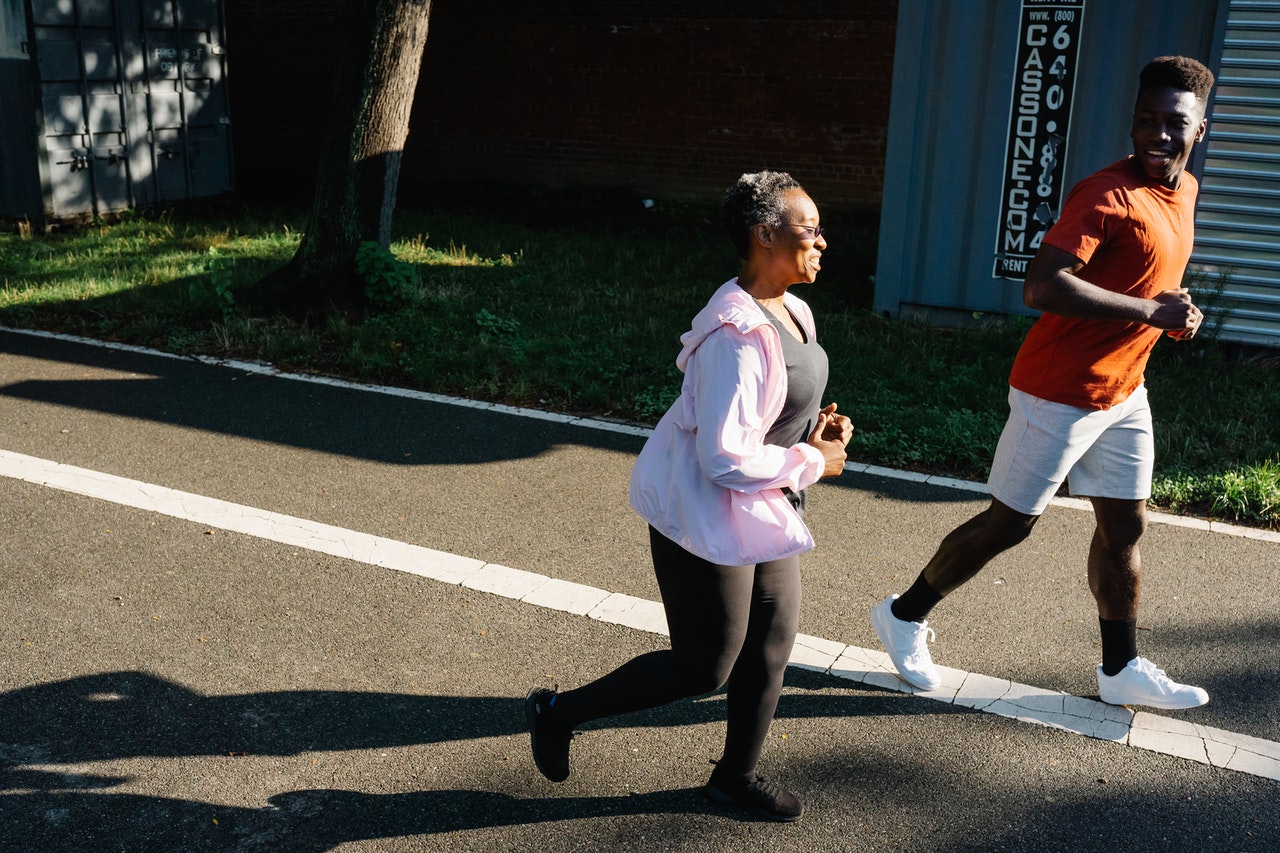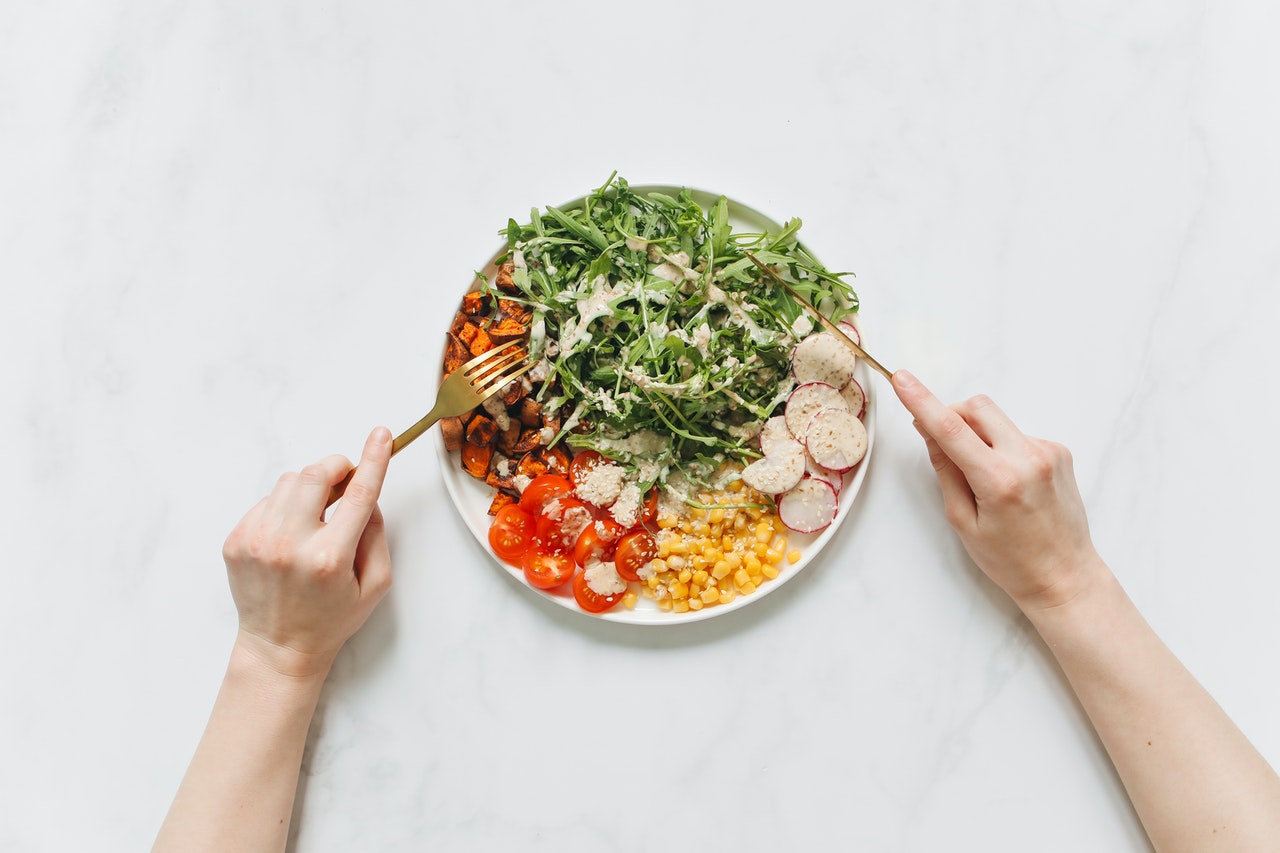4 Tips For Portion Control For Weight Loss


We’ve all done it. Ordered too much in a restaurant, gone back for seconds in our kitchen, or overindulged at a hotel buffet. Many eateries nowadays serve large portions, and even in our own homes it’s easy to have ‘eyes that are bigger than our bellies.’
Overdoing it at meal time can contribute to weight gain, and generally make us feel sluggish in between meals. Becoming overweight can then lead to heart disease, high blood pressure, gallstones, osteoporosis, and many other diseases and disorders. (1)
Even if we exercise and eat well, we can still become overweight. Basically, we have to burn off more calories than we consume.
There can be a lot of math involved to arrive at the correct numbers to keep our bodies in balance. And determining our needs is an inexact science at best, especially when trying to individualize a weight loss program to suit our body composition and genetics. (2)
Without getting too bogged down, below are some ways to focus on balancing weight, while eating a healthy and balanced amount of food, utilizing portion control for weight loss.
#1 Don’t Let Calories Consume You
Portion size is not the same as serving size. A standard amount of food, such as a cup or an ounce, is referred to as a “serving size.” Serving sizes can help you choose foods and compare similar items while shopping, but they are not recommendations for how much of a particular food to eat.
The term “portion” refers to how much food is served to you or how much you eat. Portion sizes can differ from meal to meal. At home, you might serve yourself two small pancakes in one portion, but at a restaurant, you might get a large stack of pancakes in one portion. Serving size can also be larger than portion size. (3)
Because we don’t have access to serving spoons or measuring scales at all times, getting to know portion size, by eye, is extremely helpful.
Many foods correspond to everyday objects. A medium pepper is about the size of a baseball and equals one vegetable serving. While not all foods correspond to visual cues, this method can help you improve your ability to gauge serving sizes and practice portion control for weight loss.
It may take some practice to become a better judge of serving sizes and portions, especially when assembling entire meals. However, the more you practice, the more control you’ll have over how much you eat — which is essential for portion control for weight loss.
Use these tips for culinary victory:
- A baseball or an average-sized fist measures about 1 cup – An appropriate portion size for raw or cooked vegetables, or 100% fruit juice
- A tennis ball or small scooped handful measures about ½ cup – Equal to 1-ounce equivalent for grains, such as pasta, fruit, rice, and oatmeal
- A deck of cards or the palm of the hand measures about 3 ounce-equivalent – An appropriate portion size for fish, chicken, beef, and other meats
- The size of the thumb measures about 1 tablespoon – An appropriate portion size for peanut butter or other nut spreads such as almond butter
- A postage stamp or the tip of the pointer finger to the first joint measures about 1 teaspoon – An appropriate portion size for oils, or other fats. (3,7)
#2 Easy Does It When Eating Out
Some planning before a restaurant meal can help stave off overindulgence. Try drinking a few glasses of water before leaving the house, or a small healthy snack such as a handful of nuts, so you are not starving on arrival.
Take a look at the restaurant menu online in advance, and make a plan as to what you will order. Choose starters, mains, and desserts with an appropriate amount of calories. Once in the restaurant don’t be too liberal with extras, such as bread on the side, extra sauces, and toppings, etc.
Instead of a large entrée, order one or two small appetizers. You could also split an entrée with a friend, or eat only half and put the rest in a container to take home.
Remember also that alcoholic drinks contain calories. Drink more water, or stick with one or two drinks with a lower calorie count, such as gin, or vodka, and be careful with mixers. (4)
#3 Don’t Cheat At Home
At home, you have more power and control over portion size. But you still have to exercise discipline.
There is a lot you can do to make it easier on yourself. Some people find that using smaller plates and cutlery helps, others eat a small salad, or soup before their meal.
Preparing spicier food with lots of flavors, or making at least half the plate vegetables, may help others.
Another trick is eating mindfully – the art of paying full attention to what you eat without distractions. This helps you notice hunger and fullness cues, allowing you to know when you’ve had enough. (5)
If you have a habit of emotional eating, try exercising, calling a friend, drinking a cup of tea, or journaling, just before you eat. Instead of multitasking at meals, try devoting at least 20 minutes to tuning into your food, taking time to smell, taste, and really feel its effect on your body.
According to researchers, picturing yourself indulging in the foods you crave most may actually decrease your desire to eat them. Visualization exercises appear to trick your mind into thinking you’ve already eaten the desired foods, significantly reducing cravings for them. (6)
#4 Rapid Reduction With Support
Our bodies are always seeking balance, health. When you start to make portion control and nutrition a priority, you’ll start noticing changes in the shape of your body (and the way you feel in it) very quickly.
It’s good to know that other people can cheer you on. Paying it forward are people like Dorian Marie who have helped many women gain a healthy, happy body.
If you’re on the journey toward a better balanced body, the foods that you love don’t have to change. Portion control for weight loss can be about balance and moderation, not denying yourself. Give yourself time, do your research on calories, get support from others, and in doing so, serve your body a huge portion of self-love.
- https://www.ncbi.nlm.nih.gov/books/NBK235013/
- https://pubmed.ncbi.nlm.nih.gov/12589331/
- https://www.nia.nih.gov/health/serving-and-portion-sizes-how-much-should-i-eat
- https://medlineplus.gov/ency/patientinstructions/000886.htm
- https://pubmed.ncbi.nlm.nih.gov/24636206/
- https://pubmed.ncbi.nlm.nih.gov/21148388/
- https://www.mayoclinic.org/healthy-lifestyle/weight-loss/multimedia/portion-control/sls-20076148









